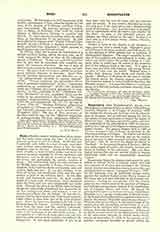

Hood, a flexible, conical, brimless headdress, covering the entire head, except the face. It is either a separate garment or part of a cloak. In the first case it generally ends below in a sort of cape, sometimes open in front, and sometimes closed so that the only opening is that for the face. Among the Romans, the hood (cucullus, a word of Celtic origin) was worn as a separate garment especially by drivers, herdsmen, and laborers; and by all classes as part of the lacerna, the birrus, and particularly the poenula, varieties of cloaks. The hood in both forms was very common in the Middle Ages, especially in France, Germany, and England, being worn by clerics and laymen, men and women, high and low. It was the ordinary headdress of monks and mendicant friars and was prescribed as part of the religious habit. In the thirteenth and fourteenth centuries the hood usually ended in a long peak (liripippium) which extended down the back, and was used occasionally as a neck-cloth. Towards the close of the Middle Ages the hood, though not universally abandoned, was superseded by the hat, among both clerics and laymen; it was retained especially by the old Orders. In fact the Capuchins receive their name from their hood (capuce), which differs in form from that of the other Francis-cans. From the hood was developed the coif or cap formerly worn by women. A form of headdress derived from the hood was the almutia (almutium, armutia), used by members of the chapter in choir as early as the beginning of the thirteenth century. It was notable as a rule for its large-sized cape and two horn-like puffs resting on the temples, but without the liripippium. It was made preferably of fur, or atleast lined with fur, and the lower part was adorned with fur tassels. It was never a liturgical garment, but only part of the choir-dress, and a distinguishing mark of the canons. As a head covering it gradually lost its significance when the biretta was adopted for the choir. As early as the sixteenth century the almutia was often carried on the arm. Today it is used only in a few places (Arras, Amiens, Chartres, Lucerne, etc.).
Similar in form to the almutia is the mozzetta, a cape provided with a small hood. Though it properly belongs to the pope, cardinals, and bishops, its use is also granted to other prelates and to members of distinguished chapters. The pope’s mozzetta is red; that of the cardinals red, rose-colored, or violet; all others are violet, unless the prelate belongs to a religious order, in which case the color of the mozzetta and of the religious habit is the same. It is open in front, but provided with buttons, and during Divine services is worn over the rochet. Bishops wear it within their dioceses, both inside and outside the church. Members of chapters do not wear it outside the church unless the chapter appears corporaliter. The mozzetta cannot be traced back farther than the fifteenth century. It is regarded either as a shortened cappa, or is derived, perhaps, and more correctly, from the almutia.
JOS. BRAUN

